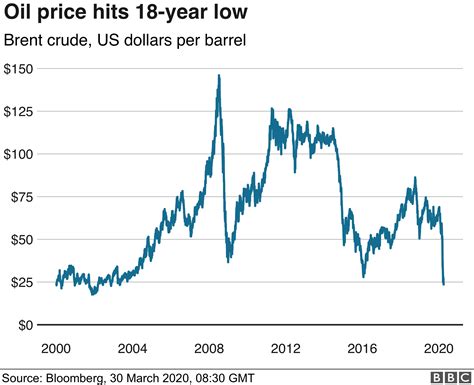Introduction
The global economy has been facing a significant challenge in recent months due to the unprecedented surge in crude oil prices. In 2025, the rate of crude oil has skyrocketed to record highs, causing widespread economic disruption and uncertainty. This article explores the factors driving the oil price surge, its impact on various sectors, and potential strategies to mitigate its effects.

Factors Driving the Oil Price Surge
The rapid increase in crude oil prices in 2025 can be attributed to a combination of factors, including:
- Geopolitical Instability: The ongoing conflict in Ukraine and other global flashpoints has disrupted oil supply chains, leading to increased demand and higher prices.
- Economic Recovery: The global economy is recovering from the COVID-19 pandemic, which has boosted demand for oil as businesses and consumers resume activity.
- Supply Chain Constraints: Shortages of truck drivers, oil tankers, and other logistical bottlenecks have exacerbated the supply-demand imbalance.
- OPEC+ Production Cuts: The Organization of the Petroleum Exporting Countries (OPEC) and its allies have reduced production in an effort to maintain high prices, further exacerbating the supply crunch.
- Investment Shortages: The transition to renewable energy sources has reduced investment in new oil production, contributing to supply constraints.
Impact on Various Sectors
The soaring crude oil prices are having a profound impact on various sectors of the global economy:
- Energy Sector: Oil companies are benefiting from the high prices, but consumers are facing increased energy bills for electricity, natural gas, and gasoline.
- Manufacturing: Production costs have risen for businesses that rely on oil as a raw material, leading to increased inflation and reduced profits.
- Transportation: The cost of fuel for trucks, ships, and airplanes has increased, disrupting supply chains and driving up transportation costs.
- Consumer Spending: Rising energy and transportation costs have reduced consumer spending power, affecting economic growth and retail sales.
Strategies to Mitigate the Effects
Governments, businesses, and consumers can implement various strategies to mitigate the effects of high crude oil prices:
- Energy Efficiency: Promoting energy conservation measures and investing in renewable energy sources can reduce dependence on fossil fuels.
- Strategic Reserves: Releasing oil from strategic reserves during times of supply disruption can help stabilize prices.
- Fiscal Policy: Governments can provide financial relief to consumers and businesses affected by high energy costs through tax cuts or price subsidies.
- International Cooperation: Coordinating efforts among oil-producing and consuming countries can help ensure a stable supply and mitigate price volatility.
Tips and Tricks for Consumers
Consumers can adopt the following tips to cope with high crude oil prices:
- Reduce energy consumption: Conserve electricity, heat, and transportation by implementing energy-efficient practices.
- Shop around: Compare prices for gasoline, heating oil, and other energy sources to find the best deals.
- Consider alternative transportation: Use public transportation, carpool, or walk to reduce fuel consumption.
- Plan for future price increases: Set aside a portion of your budget to cover potential future increases in energy costs.
Pros and Cons of High Crude Oil Prices
Pros:
- Increased revenue for oil-producing countries: High prices can boost government revenue and support economic development.
- Incentivize investment in renewable energy: High oil prices make alternative energy sources more economically viable.
Cons:
- Economic slowdown: Rising energy costs can stifle economic growth and reduce consumer spending.
- Increased inflation: High oil prices contribute to inflation, eroding the purchasing power of consumers.
- Social unrest: Severe price increases can lead to social unrest and political instability.
FAQs
1. What is the current rate of crude oil?
As of May 2025, the rate of crude oil is approximately $120 per barrel.
2. What is the main factor driving the oil price surge?
Geopolitical instability, economic recovery, and supply constraints are the primary drivers of the oil price surge.
3. What impact is the oil price surge having on the economy?
The surge is affecting energy costs, manufacturing, transportation, and consumer spending, leading to economic slowdown and inflation.
4. What can governments do to mitigate the effects of high oil prices?
Governments can implement energy efficiency measures, release strategic reserves, provide financial relief, and coordinate internationally.
5. How can consumers cope with high oil prices?
Consumers can reduce energy consumption, shop around for lower prices, consider alternative transportation, and plan for future price increases.
6. What are the potential benefits of high oil prices?
Benefits include increased revenue for oil-producing countries and incentives for investing in renewable energy.
7. What are the drawbacks of high oil prices?
Drawbacks include economic slowdown, increased inflation, and social unrest.
8. What is the outlook for crude oil prices in the future?
The future of oil prices is uncertain, but projections indicate continued volatility due to geopolitical factors, supply-demand dynamics, and the transition to renewable energy.
Conclusion
The 2025 crude oil price surge is a global crisis with significant economic implications. Understanding the driving factors, impacts, and potential mitigation strategies is crucial for governments, businesses, and consumers to navigate the challenges posed by this unprecedented situation. While high oil prices may bring certain benefits, they also pose significant risks that require proactive measures to ensure a stable and prosperous global economy.



